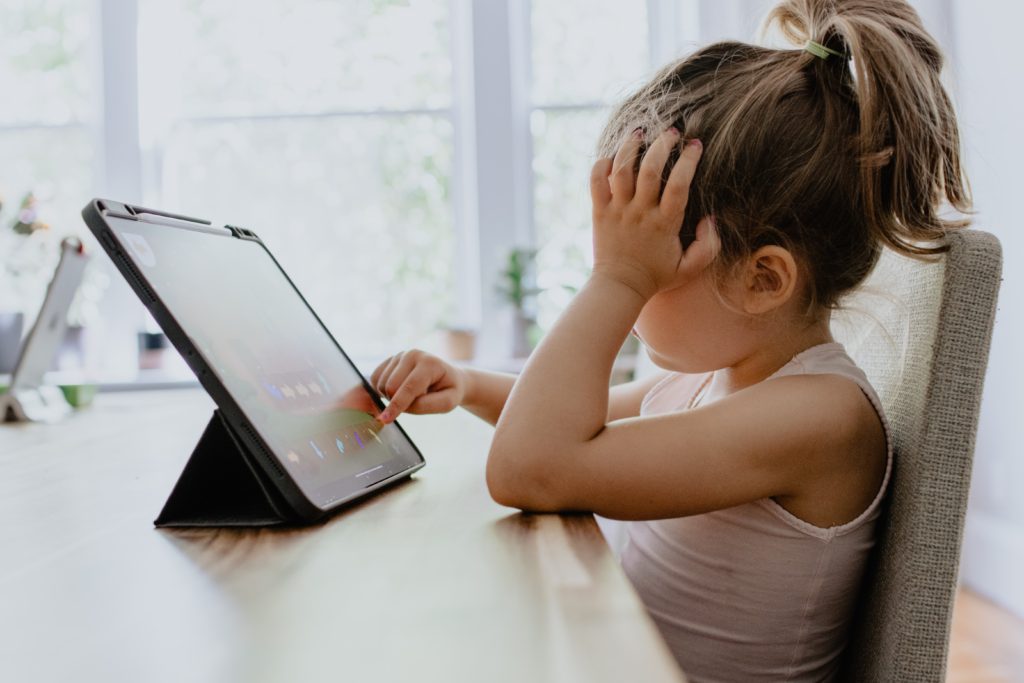Not infected does not mean unaffected. Although this is true for people of any age during the COVID-19 pandemic, it is especially true of children. “Generation COVID”, also known as Gen C, is the increasingly popular name that was first used to describe babies born after the initial spread of COVID-19. Now, its popular use has expanded to describe children at critical life transitions during the ongoing global pandemic. This name was generated in an American poll that also suggested Generation ‘Q’ (for Quarantine) or Quaranteenies. Although the seemingly adorable nature of this last name may provide a humorous light to the situation, the potential impact on these young individuals is anything but amusing.
With a continuously spreading, and sometimes deadly, virus running rampant throughout the globe, it is natural that physical health often draws the most concern. However, as the pandemic continues to force global shutdowns, social distancing, and school closures, our attention should expand towards the psychological, emotional, and developmental consequences that are resulting from this severe alteration to normal life. There is a growing area of research looking at the current mental health consequences of the pandemic on children. Although researchers have tried to make comparisons to previous disaster situations and epidemics, the stark reality is that the long-term impacts of this international event on children are both unknown and unprecedented on this scale.
Perhaps the most evident change children have had to face as a result of the COVID-19 has been the long-term, unplanned school closures. Elimination of in-person classes has led to significant disruption in children’s routines, leading to a plethora of physical consequences ranging from irregular sleep patterns, less balanced diets, and decreased physical exercise. This is particularly serious considering the inextricable link between physical and mental health. For example, literature has shown that regular physical exercise can lead to a decrease in symptoms of depression and anxiety making the cessation of this regular activity detrimental to children. It is therefore unsurprising that several studies have indicated that children who have experienced prolonged school closures have been reported to be experiencing greater rates of anxiety and loneliness as well as loss of motivation and purpose. These negative impacts can also exacerbate pre-existing mental health conditions, which are further worsened by decreased access to support and treatment due to pandemic restrictions and shutdowns.

Additionally, we cannot ignore the long-term impacts of the COVID-19 pandemic on children, some of which we have not even begun to see. Several studies (conducted prior to the pandemic) have shown the importance of early education on later academic performance and self-regulation. Children who attended full-day kindergarten had improved performance in vocabulary, reading, number knowledge and self-regulation compared to a similar cohort who attended half-day kindergarten. These children were followed until Grade 3 and a study by Pelletier and Corter5found that the differences in performance were still evident. Although this may at first seem to have no bearing on the situation at hand, this shows that even variations of in-school learning can have long-term impact on children’s performance. So, we must ask ourselves, what far-reaching impact may we see for young children forced to meet their early educational needs from behind a computer screen? This method of learning also overlooks the socialization needs that are important for a child’s psychological and emotional wellbeing which can be jeopardized by social distancing. It therefore begs the further question of what effects this social isolation will have on children and young adolescents as they grow and develop in a post-pandemic world.
It is not only the education and mental health of children that are suffering during this time. It is important to remember that children are growing and learning about their world. Therefore, the stimulus they receive can have an impact on their opinions and understanding of their environment. Although the literature has not caught up, anecdotal evidence suggests that children are not spared from the frustration experienced by governmental mixed messaging and yo-yoing decisions. This prompts the question of what confidence and trust these children will hold for the government entities that have stumbled and made mistakes during this difficult time.
We also must remain cognizant of the fact that children (just like individuals of all ages) are being disproportionately affected by the pandemic depending on their race, socioeconomic status, and birthplace. Disparate access to resources including proper nutrition, care, and education can have compounding effects on a child’s life that may shadow them into the future as the gap continues to widen between them and others in their cohort. School shutdowns have further highlighted differences in access as some students were reliant on school-provided meals while others have no access to internet, thus affecting their participation in online learning. The likelihood of these problems increasing is high, as many researchers predict a global economic recession in the wake of the pandemic.This will increase the number of families living in poverty and therefore the number of children exposed to these conditions.
More than the disparate access to resources, children are also highly affected by the stress experienced by their parents. Although this may be short-term and easy to recover from, there is also the sad reality that this situation has led to an increase in cases of domestic violence experienced and witnessed by children. With teachers often being the individuals who catch and report these incidents, lack of in-person classes can lead to these cases going undiscovered. Additionally, school closures mean that the escape children may have is no longer present. This stress and trauma can have long term physical and mental health effects on children.
So, while the physical health needs of children must remain a primary concern, it is well past time to consider the psychological, emotional and developmental needs of these young individuals who are growing up in a changing world. Recognizing and understanding the impact on this new ‘Generation C’ is important to helping them to adapt and thrive in a post-pandemic world.
References:
- Brinlee, M. This Could Be The Name For The Generation Of Babies Conceived During The Pandemic. Romperhttps://www.romper.com/p/babies-conceived-during-pandemic-should-be-named-generation-c-poll-says-22839217 (2020).
- Nearchou, F.,Flinn, C., Niland, R., Subramaniam, S. S. & Hennessy, E. Exploring the Impact of COVID-19 on Mental Health Outcomes in Children and Adolescents: A Systematic Review. International Journal of Environmental Research and Public Health 17, 8479 (2020).
- De Mello, M. T. et al.Relationship between physical activity and depression and anxiety symptoms: A population study. Journal of Affective Disorders 149, 241–246 (2013).
- Pelletier, J. & Fesseha, E. The Impact of Full-Day Kindergarten on Learning Outcomes and Self-Regulation Among Kindergarten Children at Risk for Placement in Special Education. Exceptionality Education International 29, 42–56 (2019).
- Patricia Pelletier, J. & Corter, J. E. A longitudinal comparison of learning outcomes in full-day and half-day kindergarten. The Journal of Educational Research 112, 192–210 (2019).
- Bell, B. Our Kids Can’t Trust the Government, and That’s a Problem. CBC Parentshttps://www.cbc.ca/parents/learning/view/our-kids-cant-trust-the-government-and-thats-a-problem (2021).
- Yoshikawa, H. et al.Effects of the Global Coronavirus Disease-2019 Pandemic on Early Childhood Development: Short-and Long-Term Risks and Mitigating Program and Policy Actions. J Pediatr 223, 188–193 (2020).
- Marques de Miranda, D., da Silva Athanasio, B., Sena Oliveira, A. C. & Simoes-e-Silva, A. C. How is COVID-19 pandemic impacting mental health of children and adolescents? International Journal of Disaster Risk Reduction 51, 101845 (2020).
Picture references: Photo by Jeremy Bishop on Unsplash
Meghan Kates
Latest posts by Meghan Kates (see all)
- See a need, fill a need: an alumni interview with Dr. Sam Saibil - October 30, 2023
- From Hoax to Hyperbole : The truth behind the Alzheimer’s Disease scandals - June 5, 2023
- Man’s Trash is a Microbe’s Treasure: Bioremediation as a pollution solution - January 30, 2023


